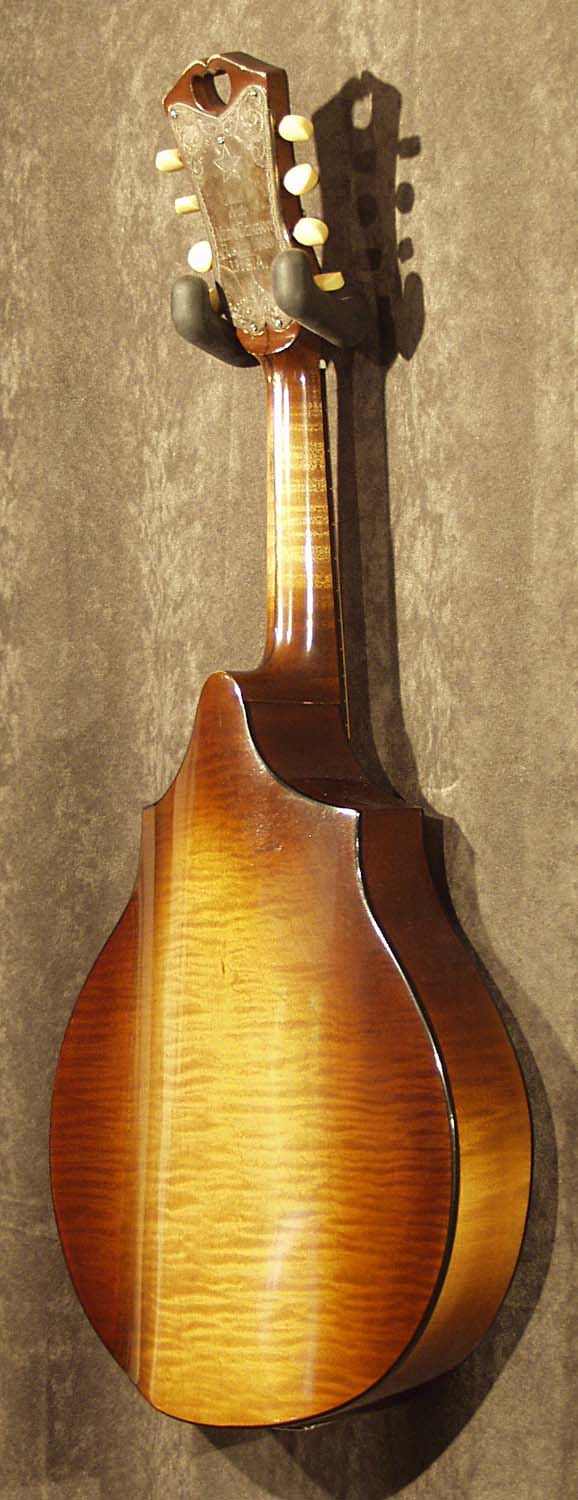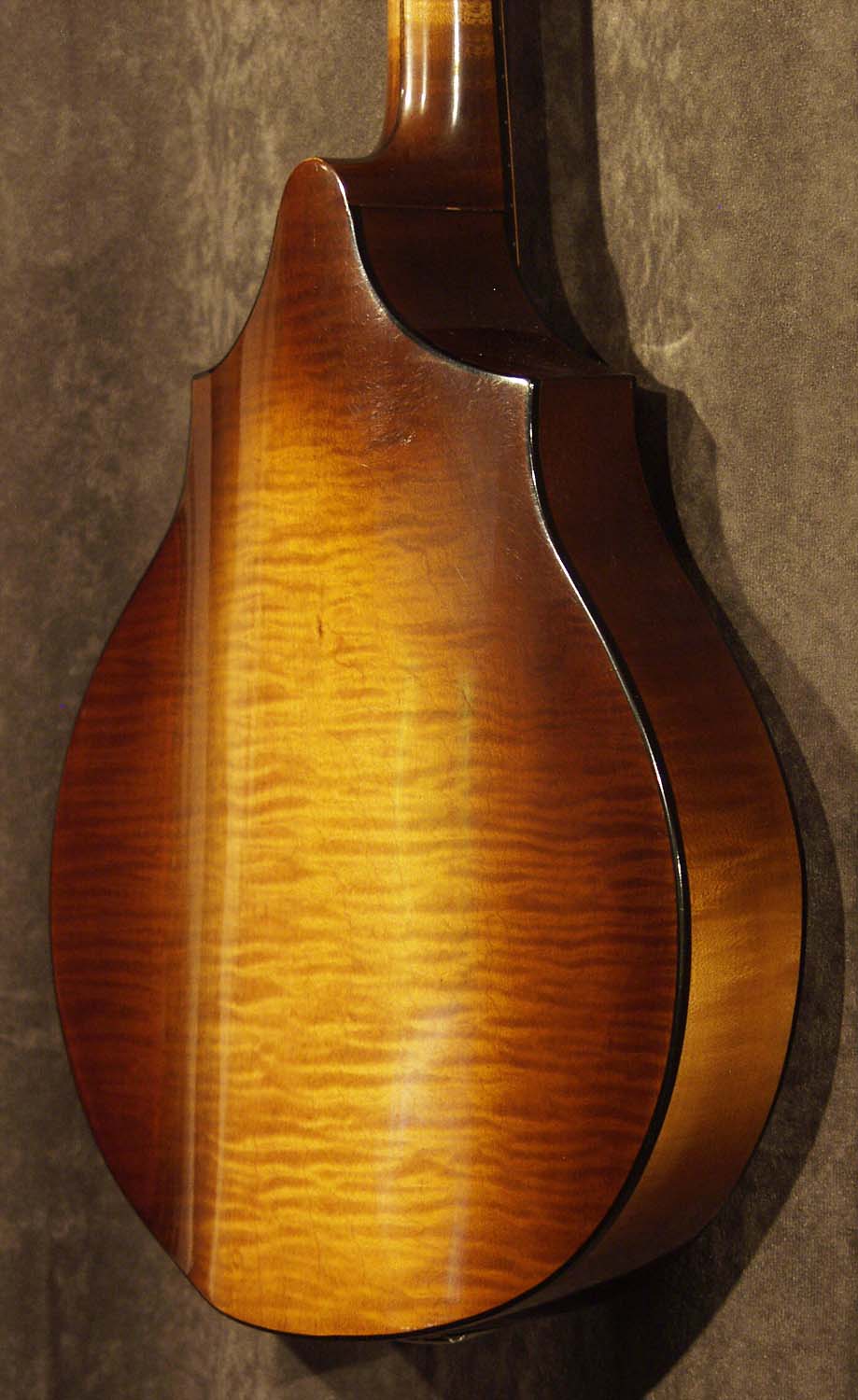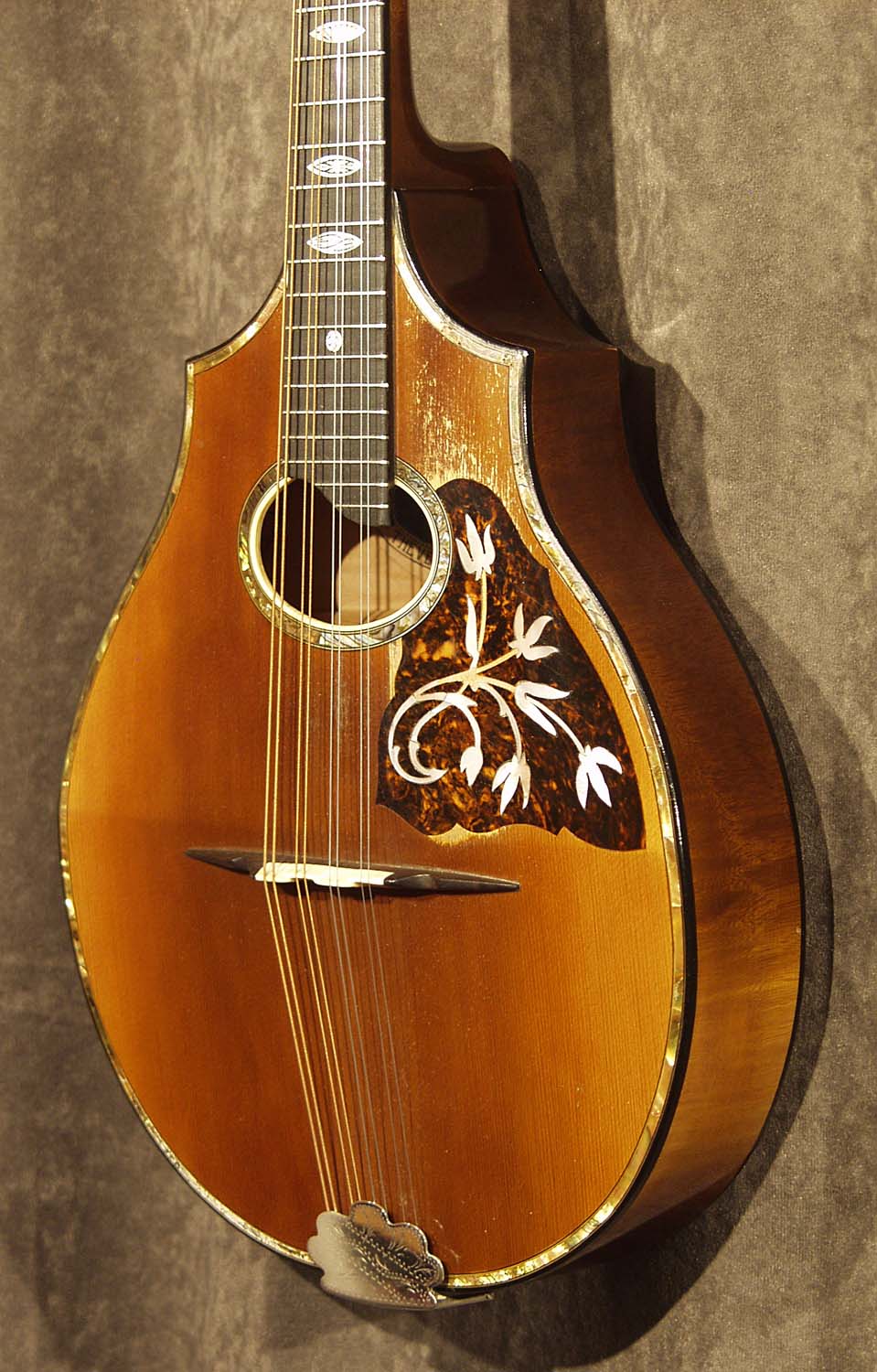Description
Vega Cylinder Back MandolinModel:207 ? Presentation model, Curly maple back & sidesSerial number:38153 (located on the top of the headstock)Manufacture date:1920 (from Vega records)Body Shape:Two pointWoods:Curly maple back & sides, spruce top (nominal wear on the top ? through the finish).Tint:Graded shading tint: lighter at the edges, graded off the cylinder; reverse graded on the back.Inlays:Abalone top trim and rosette, pearl flower pickguard inlay (damaged and some missing pieces)Tuners:Original, engraved silver plated back cover: The Vega star plus: ?Made by the Vega Company, Boston, Mass. U.S.A.?. Ivoroid buttons.Tailpiece:Appears original; nickel plated, engraved cover.Bridge:Appears original; ebony with ivory inset string support.Notes:Nov. 4th, 1913 Patent on cross brace and neck block.SPECIAL FEATURES:?Neck inlays: hand engraved pearl: oval with points and round.?Headstock hole ? no star.?Inlayed Mother of Pearl eyelets around the tuning pegs.NOTED CHANGES AND REPAIRS:?Appears to be all original.?Face wear appears from considerable use. Suggest nitro cellulose seal.?Neck & fretboard appear to be very good.?Bar frets need mild set-up attention.The cylinder-back is a style of mandolin manufactured by the Vega Company of Boston, MA between 1913 and roughly 1925. The design patent (US patent number D44838) for the instrument was issued on November 4, 1913 to David L. Day, who was director and chief acoustical engineer for the stringed instrument division of the Vega Company. The unique design feature of the cylinder-back instruments (originally referred to as mando-lutes by their manufacturer) is a cylindrical bulge running longitudinally along the back plate, from the tailpiece to the neck heel. This bulge increases the internal volume of the instrument. The result has been described as a compromise between the earlier Neapolitan-style bowl-back mandolins and the more modern styles with relatively flat backs that were manufactured primarily in the United States around the time of the cylinder-back’s first appearance. In addition to the mandolin, the same bulged-back concept was applied to the Vega mandola, mandcello, and mando-bass as well as to a series of hybrid 10-string instruments than spanned the pitch range between adjacently-sized 8-string models.From: Jazzbit.com: All text is available under the terms of the GNU Free Documentation License.Research compiled by Leonard Wyeth





